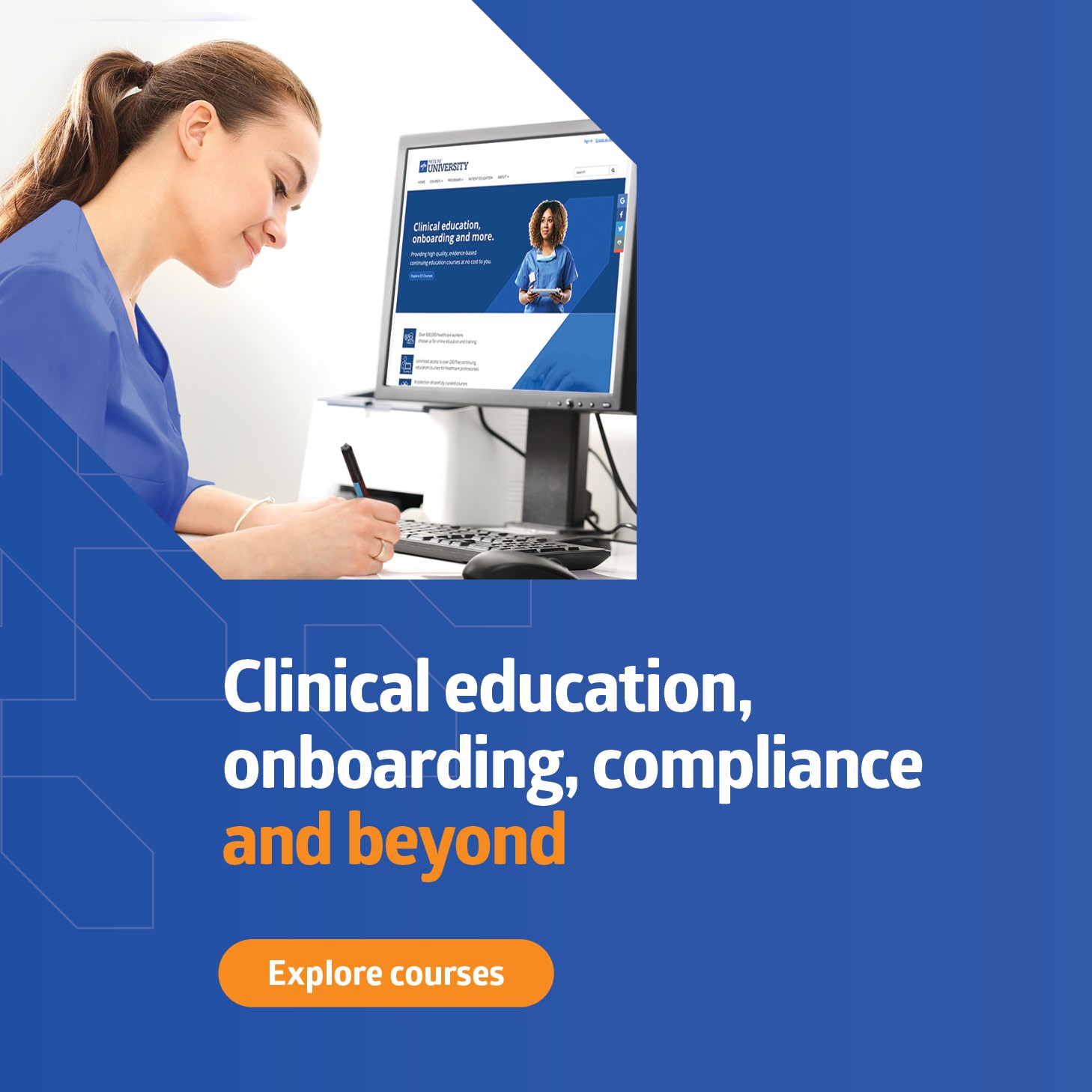The future of healthcare education is fun and games

By Medline Newsroom Staff | February 21, 2023
Can a game of cards help improve patient safety and care?
To leverage people’s natural desire for learning, socializing, competition and achievement, hospitals and healthcare facilities are finding new and more engaging ways to enhance required ongoing training, critical in updating and reinforcing infection prevention and other clinical standardization programs and protocols. Gamification – the process of adding games or game-like elements – may be the answer.
“During COVID we were looking for new and innovative ways to engage our audience remotely, and began to think outside the box about how to build confidence and retention of information. As a result, our activities have been moving more and more toward gamification models,” said Geoff Kass, director of Medline University, which offers more than 275 free acute and post-acute care courses for clinicians and other healthcare professionals. “Gamification of clinical content can be a simple, fun way to educate and reinforce basic standards and protocols.”
“Gamification is definitely a growing trend in healthcare education,” said Brenda Kozak, Medline senior clinical education specialist. “Some of the models in gamification that we use for Medline University courses include scenario-based modules, graphics, gameshow avatars, time-based matching quizzes, and awards such as badges.”
Generational appeal
Use of gamification in continuing education can appeal cross-generationally. However, each group has different strengths and ways of learning that need to be considered. For example, Generation X tend to be independent learners, and a game allows users to progress at their own ability and speed. Millennials like instant feedback; games provide that. Generation Z is used to learning through multiple channels, and games can be one of those channels.
The benefits of gamification in medical education have been well documented. For instance, according to a recent Clinical Anatomy study, gamification can “improve learning, engagement and cooperation by allowing for real-world application. They may also help with promoting risk-free healthcare decision-making, remote learning, learning analytics, and quick feedback.”
“Gamification of clinical content can be a simple, fun way to educate and reinforce basic standards and protocols.”

Geoff Kass
Director, Medline University
As a result, a growing number of medical schools are utilizing gamified training platforms including educational games, mobile medical apps, and virtual patient scenarios. And future doctors will expect to encounter these types of continuing education applications throughout their careers.
Healthcare education can be delivered in the form of simulations, virtual reality (VR) and augmented reality (AR) constructs, and games. Some other examples include escape rooms, videos and interactive electronic games.
Clinical examples
Acute and post-acute facilities can also incorporate gamification into their education systems. These processes build a spirit of teamwork and provide a healthy, robust work culture environment.
Virtual reality in the acute space provides a major benefit. It allows healthcare professionals to practice their work. For instance, surgeons can use virtual reality simulations to practice and repeat surgical scenarios without the risk of hurting anyone. Practicing new or existing skills in a safe, controllable space is a great benefit for surgeons who want to rehearse and strengthen their skills before an operation with a real patient.
An example in the post-acute space includes a game that teaches staff hand hygiene compliance as part of Medline’s Post-Acute Care Infection Prevention Program. The cards outline different scenarios that clinicians experience while administering care, such as feeding a resident, transferring a resident from the bed to a chair, gathering wound care supplies, and cleaning rooms. The caregiver then identifies the correct hand hygiene product to use, detailed on the cards.
“The initial iteration was much more complicated,” said Caryn Arnold, medical science liaison for Medline. “But once we figured it out, a card game format really fit well with the material being taught.”
Benefits and techniques
In most healthcare and wellness-related applications, gamification success can yield positive results in three ways:
- Increasing the perceived value of what is learned by invoking progress-related psychological biases. Progress bars can be used to measure success.
- Creating a competitive spirit among colleagues and friends, improving overall teamwork and patient care.
- Providing participants with a sense of achievement enhanced through the receipt of medals, badges, stars and other rewards for success.
For instance, Medline University uses scenario-based elements in their “Self-care for Nurses” course that includes vending machine graphics to present benefits of self-care, a maze to navigate barriers to self-care, a reflection exercise for identifying burnout, and a puzzle for achieving wellness through balance. Another example is found in the “Safety Culture: Communication Lessons” course, in which an ambulance travels across a timeline with each stop providing safety information along the way.
In the “Appropriate Vascular Access Device Selection” course, there are scenarios with a gameshow avatar. And “9 On the Line – Patient Safety in the Operating Room” provides badges for all the modules completed, including functions to drag patient specific or perioperative risk factors into an image to view the details. It also includes mystery flip cards and patient safety medals.
How to implement gamification into your continuing education
The skills you will need to effectively implement gamification into your system, include:
- Teamwork to implement gamification on a broad level and to maintain standards.
- Technological savvy to leverage the most recent innovations and stay up to date on how techniques are evolving.
- Customer-relation skills to help patients or staff understand and troubleshoot their applications.
- Leadership to set a vision and provide clear sense of direction for how gamification can be used.
- Sales and marketing skills to help healthcare providers seek buy-in for gamification efforts.
- Organizational, decision making and goal setting to build a professional culture in which gamification is valued and innovation is sought.
Also, players can include other individuals — residents, their families, volunteers, activity coordinators and dietary support staff. And increasing the number of individuals focused on best practices and control can ensure that the gamification program has continuity.
Finally, patient-centered apps with gamification elements can help monitor the progress of an individual’s nutrition, physical therapy and daily physical activity to promote health and better outcomes. This can be notably helpful in facilities that are experiencing staffing shortages.
2023 and beyond
Healthcare staff will continue to be overwhelmed and fatigued from ongoing post-COVID-19 pressures and challenges. A back-to-basics approach for acute and post-acute care facilities that includes implementing targeted education and training programs that are creative, innovative and engaging; finding ways to make manual observations more efficient; and using champions to support continuing education, can lead to improvements in clinical standardization.
“The trend of gamification in healthcare education is only going to increase over time,” said Kass. “It is more engaging and today’s technology opens doors for more creative implementation. Considering gamification in your education and training program could be a very useful and valuable tool in your toolbox.”
Learn more about Medline’s no-cost continuing education and training programs.
Medline Newsroom Staff
Medline Newsroom Staff
Medline's newsroom staff researches and reports on the latest news and trends in healthcare.


